During the past few years, there has been a lot of debate on various approaches to marketing to today’s multicultural, minority-majority consumers, namely, whether a segmented/targeted approach or a Total Market approach would be more effective. At the heart of the debate is the role of culture and its influence on consumer behaviors. One of the main themes from this year’s Asian Marketing Summit by the Asian American Advertising Federation is culture and its role in marketing. I thought I would share my key takeaways from these insightful presentations.
Culture is a very broad term. A Google search of definition of culture yields the following: The arts and other manifestations of human intellectual achievement regarded collectively. So it can be anything, be it based on age, gender, generation, era, ethnic background, etc. For the purpose of discussion in this blog, culture referrals to one’s upbringing, and for immigrants, cultural background and identity pertaining to their countries of origin.
In Kathy Cheng’s presentation Culture: A Pathway to Unstated Consumer Preferences, she provides ample examples to illustrate cultural DNA of interdependence in Asian culture being the key driver for Asian consumers’ predisposition to seek one-stop shopping or package deals. One of the examples she presented is the comparison between travel site apps Ctrip (a popular Chinese travel app) and Priceline. The Ctrip app includes more than two dozen functions from air fare, lodging to travel visa to local restaurants and 24/7 customer service. In contrast, the Priceline app sports a clean and clear look with three primary functions – hotels, flights and rental cars. (For more information about Kathy’s presentation on cultural DNA, please refer to https://www.linkedin.com/pulse/meet-consumers-where-multicultural-marketing-kathy-cheng)
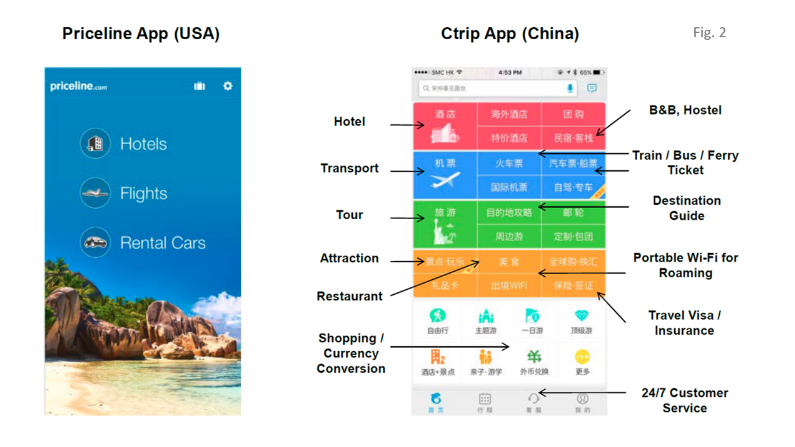
Asian American consumer culture
(Illustration from Kathy Cheng’s presentation at the 3AF 2017 Asian Marketing Summit)
Culture no doubt plays an important role in consumer behaviors. The next question becomes as immigrants and their descendants acculturate, how much of that cultural DNA is retained.
In the Asian American Market Report created by Phoenix Marketing International in partnership with ISA, majority of Asian Americans maintain their cultural connection through food, music, TV programming and attending community events regardless of acculturation level.
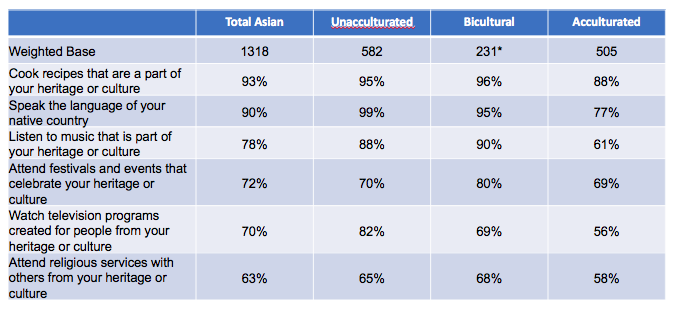
Moving beyond demographics
(Asian American Market Report by Phoenix Marketing International)
Ramit Sethi, a New York Times best-selling author of I will Teach You To Be Rich, in fact takes pride in his cultural background in some of his personal/business growth advice. https://www.iwillteachyoutoberich.com/blog/negotiate-like-an-indian-how-to-negotiate-a-salary-increase-video/
Asian American’s connection to cultural roots is noteworthy because the influence of one’s identity, culture and passionate points can be amplified effectively in this digital age and have an impact on broader consumer groups.
Edwin Wong, VP of Research and Insights of Buzzfeed, in his presentation Decoding Culture elaborated on the end of demographics, segmentation and targeting and the power of one in consumer influence in culture, movement and ultimately purchase behavior.
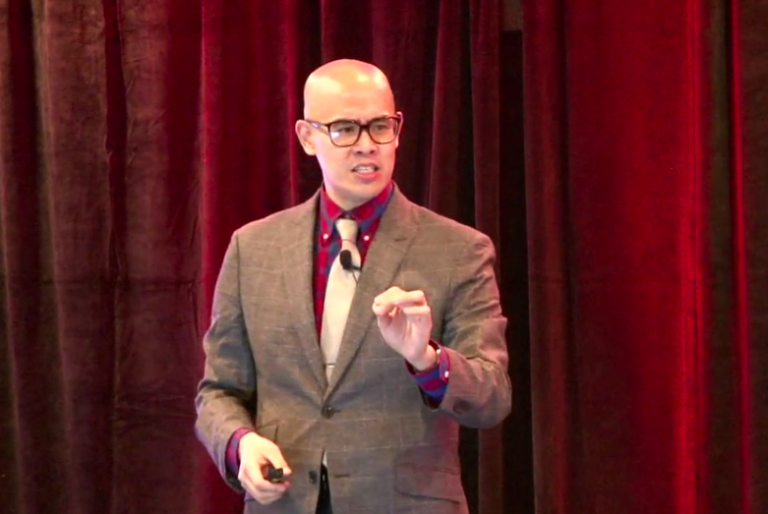
Moving beyond demographics
(Edwin Wong, VP of Research and Insights Buzzfeed, speaking at the 2017 3AF Asian Marketing Summit)
Indeed, Markio Carpenter, VP of Strategic Community Alliances at Nielsen, shared in her presentation on the influence of digitally savvy and trendsetting Asian American women whose passion for Korean beauty products has introduced General Market female consumers to a whole new world of beauty products and skincare regimen.
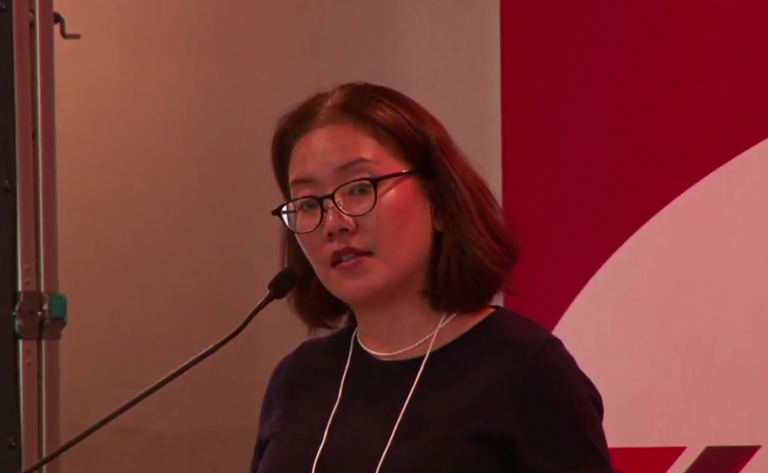
Moving beyond demographics
(Mariko Carpenter, VP of Strategic Community Aliances at Nielsen, speaking at the 3AF 2017 Asian Marketing Summit)
The latest 3AF media consumption study (http://www.3af.org/research/index.html) sheds lights on a consumer group that’s bicultural, bilingual and digital savvy. They use mainstream media for information and entertainment but also utilize niche media to stay connected to their cultural roots, the community and their home countries. Technology also makes contents in all forms, whether produced in the U.S. or in home countries, more accessible than ever. Technology tools and Asian American’s digital savviness make it easier to share their passion, authentic stories and amplify their influence as a consumer group.
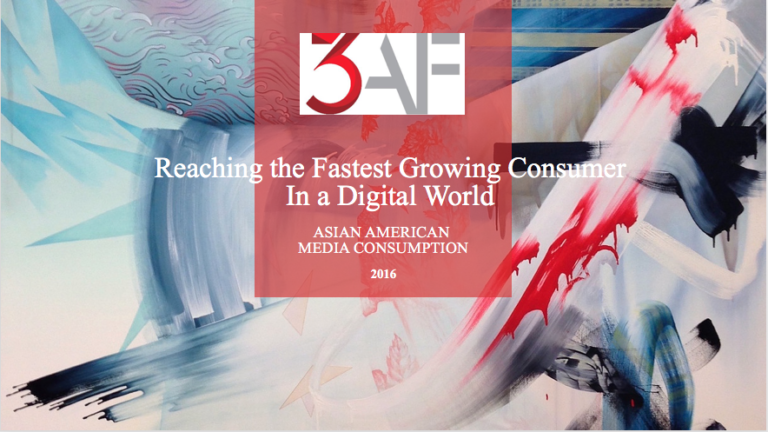
(Cover of 3AF’s Asian American media consumption study)
Culture takes many forms, part of it is ingrained, part of it is acquired and may shift based on social norms, trends, education, information and interactions with others.
My husband who is Danish, fluent in Mandarin, well versed in Chinese culture and history once joked with me that he was more Asian American than most of the U.S. born Asian Americans. I posted a quiz about whether my Danish husband, who has obviously acquired a lot of Asian culture and knowledge, can be considered “Asian American” on my Facebook and most of my Asian American friends said “no.” I take that they considered being Asian American a right or identify by birth, not something that can be acquired. And there is pride in that cultural identity.
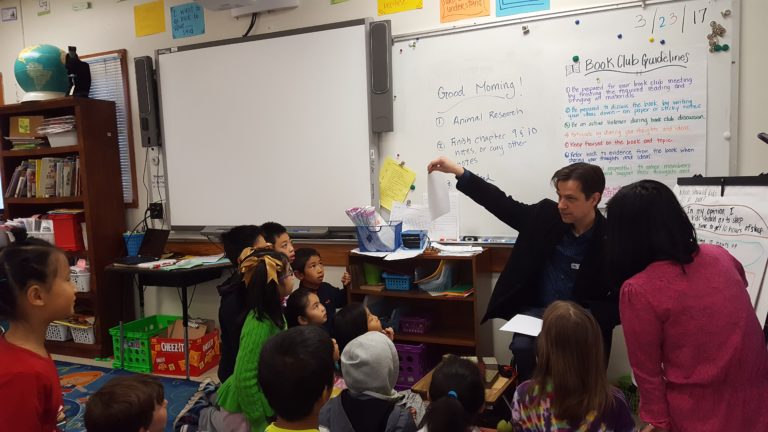
(Dr. Uffe Bergeton, Assistant Professor of Asian Studies at UNC, Chapel Hill, talking to 2nd graders about his Chinese seal collection)
There are many ways that each of us chooses to identify ourselves be it gender, ideology, religion, or social economics. But at the end of the day, it’s the ingrained cultural DNA, one’s upbringing and cultural roots that plays the most important role in shaping one’s identity. And that’s where marketers can meet consumers where they are, on an emotional level.
